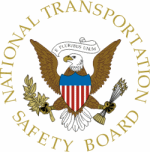Sun, Sep 19, 2010
Board Cites Rudder Problems Encountered Before AA Airbus Went
Down
 The NTSB recently issued a safety
recommendation to the European Aviation Safety Agency (EASA)
regarding the November 2001 accident involving an American Airlines
Airbus near JFK. Flight 587, which was flying to the Dominican
Republic, went down in the Belle Harbor neighborhood of Queens.
There were no survivors among the 260 passengers and crew, and five
people on the ground were also killed.
The NTSB recently issued a safety
recommendation to the European Aviation Safety Agency (EASA)
regarding the November 2001 accident involving an American Airlines
Airbus near JFK. Flight 587, which was flying to the Dominican
Republic, went down in the Belle Harbor neighborhood of Queens.
There were no survivors among the 260 passengers and crew, and five
people on the ground were also killed.
The NTSB determined that the probable cause of the accident was
"the in-flight separation of the vertical stabilizer as a result of
the loads beyond ultimate design that were created by the first
officer's unnecessary and excessive rudder pedal inputs.
Contributing to these rudder pedal inputs were characteristics of
the Airbus A300-600 rudder system design and elements of the
American Airlines Advanced Aircraft Maneuvering Program." Flight
587 encountered wake turbulence from a Boeing 747 shortly after
takeoff, and the pilot's steering response created severe strain on
the rudder mechanism. Sounds of likely mechanical failures could be
heard in the recorded data recovered from the plane's wreckage, as
well as the pilots' attempts to right the aircraft.
Soon after its investigation commenced, the NTSB issued a safety
recommendation for updates in training of all pilots of
transport-category airplanes.
 The "loads" referenced by the NTSB
are aerodynamic stresses caused by rapid movement of the rudder in
an attempt to combat the aircraft movement caused by the wake of
the nearby Boeing 747. The report, however, also pointed to
"characteristics of the Airbus A300-600 rudder system design and
elements of the American Airlines Advanced Aircraft Maneuvering
Program," as a contributing factor in the crash.
The "loads" referenced by the NTSB
are aerodynamic stresses caused by rapid movement of the rudder in
an attempt to combat the aircraft movement caused by the wake of
the nearby Boeing 747. The report, however, also pointed to
"characteristics of the Airbus A300-600 rudder system design and
elements of the American Airlines Advanced Aircraft Maneuvering
Program," as a contributing factor in the crash.
The Accident airplane was built in France, subject to European
regulatory oversight. In its new recommendation, issued on August
4, 2010, the NTSB encourages modification of European certification
standards to ensure safe handling qualities "in the yaw axis
throughout the flight envelope," as well as instituting limits for
the sensitivity of rudder pedals. The yaw axis refers to the axis
about which the aircraft nose and tail moves side-to-side. The
flight envelope refers to the outer boundaries of flight for which
the aircraft is designed.
The NTSB recommendation involves limiting rudder movement so
that the aerodynamic stresses or "loads" do not exceed the design
maximums. The NTSB also suggests review and modification, if
necessary, of all existing models of the Airbus A300-600 and A310
aircraft.
More News
Aero Linx: The American Society of Aerospace Medicine Specialists (ASAMS) The Society is a non-profit organization created to serve as a voice for and represent the professional ne>[...]
Class C Service This service provides, in addition to basic radar service, approved separation between IFR and VFR aircraft, and sequencing of VFR aircraft, and sequencing of VFR a>[...]
Have A Story That NEEDS To Be Featured On Aero-News? Here’s How To Submit A Story To Our Team Some of the greatest new stories ANN has ever covered have been submitted by our>[...]
Also: ERAU Uses UAVs, P550 Group 2 UAS, Starship’s Florida Launches, NASA Missions Chopped The Air Force has put out a call to commission a one-to-one copy of the Iranian-des>[...]
Classic Klyde Morris From 11.07.16 (and Remembering Bob...) FMI: www.klydemorris.com>[...]
 ANN's Daily Aero-Linx (08.27.25)
ANN's Daily Aero-Linx (08.27.25) ANN's Daily Aero-Term (08.27.25): Class C Service
ANN's Daily Aero-Term (08.27.25): Class C Service ANN FAQ: Submit a News Story!
ANN FAQ: Submit a News Story! Airborne-NextGen 08.26.25: Iran UAV Knockoffs, X-37B Spaceplane, Army Training
Airborne-NextGen 08.26.25: Iran UAV Knockoffs, X-37B Spaceplane, Army Training Classic Klyde Morris (08.25.25)
Classic Klyde Morris (08.25.25)




